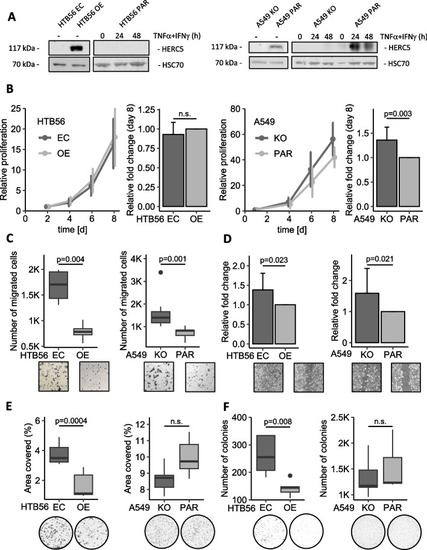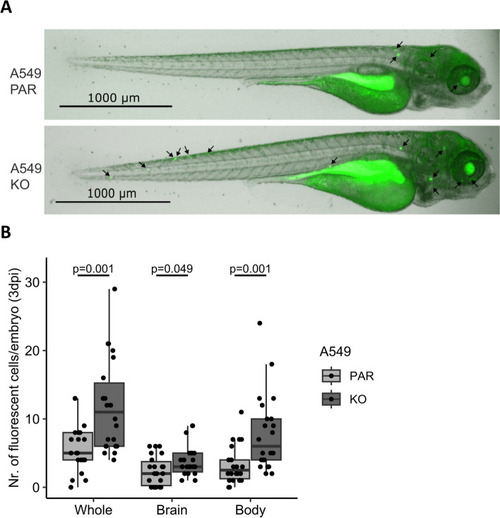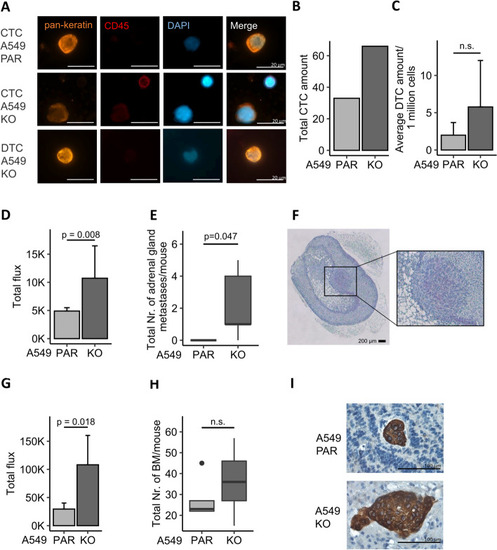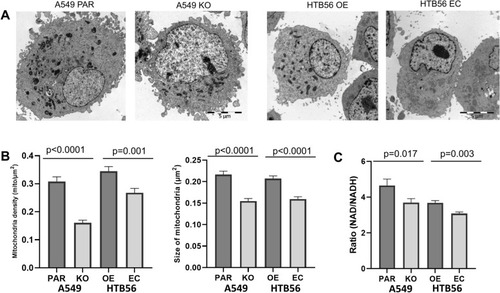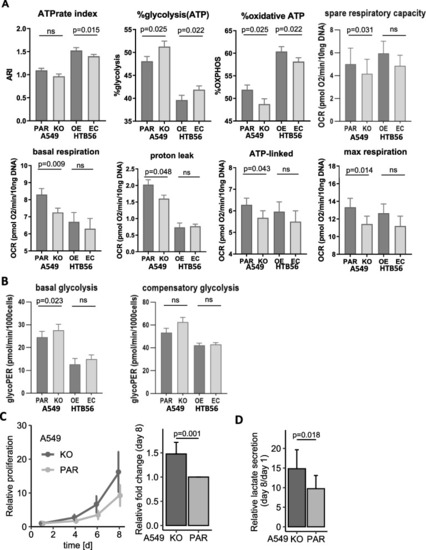- Title
-
HERC5 downregulation in non-small cell lung cancer is associated with altered energy metabolism and metastasis
- Authors
- Schneegans, S., Löptien, J., Mojzisch, A., Loreth, D., Kretz, O., Raschdorf, C., Hanssen, A., Gocke, A., Siebels, B., Gunasekaran, K., Ding, Y., Oliveira-Ferrer, L., Brylka, L., Schinke, T., Schlüter, H., Paatero, I., Voß, H., Werner, S., Pantel, K., Wikman, H.
- Source
- Full text @ J. Exp. Clin. Cancer Res.
|
HERC5 inhibits tumor-associated aggressiveness in vitro. |
|
HERC5 KO promotes the survival of DTCs in a zebrafish model. |
|
HERC5 inhibits tumor-associated aggressiveness in a mouse model |
|
Proteomics reveals enrichment of proteins connected to mitochondrial metabolism in cell lines differentially expressing HERC5. |
|
HERC5 induces changes in mitochondrial morphology. |
|
HERC5 KO switches metabolism from oxidative phosphorylation to aerobic glycolysis. |

